What It's Really Like to Attend a Fashion High School
The fashion industry loves to pluck out the next big thing from a college graduation show, but universities aren't the only places talent is being fostered.
In New York City, the public school system includes specialized programs for promising students that offer advanced educational opportunities around specific career fields. Among these is the High School of Fashion Industries (HSFI): Founded in 1926, it began as a training ground for needle trades (it's where the Fashion Institute of Technology originated), and is now a fashion-focused Career and Technical Education (CTE) high school that prepares students grades 9 through 12 for careers in the fashion industry, ranging from business to design.
"Not only are we remaining vigilant in looking towards the future, we're very, very connected with our past, our history and our legacy," says Tara Ricci, HSFI's department coordinator of fashion design and software development.
Below, staff, alumi and current students break down the ins and outs of attending a fashion high school — from class expectations to internship opportunities to the post-grad experience.
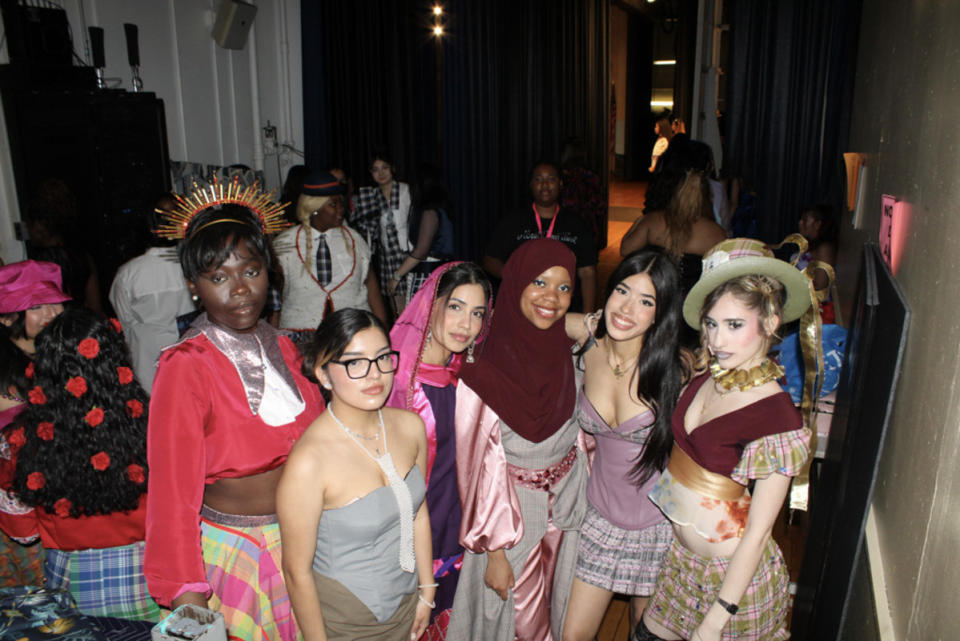
Photo: Courtesy of NYC Public Schools
Admissions Process
Applications for HSFI open in October to students in the eighth grade, and are due that December. There are six majors prospective students rank when applying: Fashion Design, Art & Graphic Design, Photography, Software Development, Fashion Marketing and Management and Visual Presentation & Design. Each calls for different portfolio requirements. Applying may not be a complex process, but it is competitive — each class ends up with a waitlist.
Considering students are so young when they enter HSFI, nobody is expected to come in with hard, technical skills. What they should have, however, is passion and creativity.
"Skills can be taught and mastered, but that ingenuity, that kind of thinking, that's very hard to cultivate," Ricci says. "Kids apply knowing what our program entails. Our mission at the school is to really hone in on the students who want to be here. If the students are willing and wanting to learn and they show up that way, we meet them that way."
Once they're enrolled, it's recommended that students stick to the major they applied for. If they want to switch, they have until the end of ninth grade to do so, mainly because the strict curriculum set-up and major-specific classes leave little-to-no room for indecisiveness. (Similarly, HSFI rarely takes transfer students due to its rigorous four-year program and difficulty in transferring credits.) Cross-major electives are available — for example, a design student can take a photography class — but even then, that's only if students have the time.
"I think the hard part is that you're balancing fashion and regular classes," Fashion Design alum Noreamy Almanzar, '23, says. "You still have to take your regents and have your credits for the other classes, all on top of doing your fashion work."
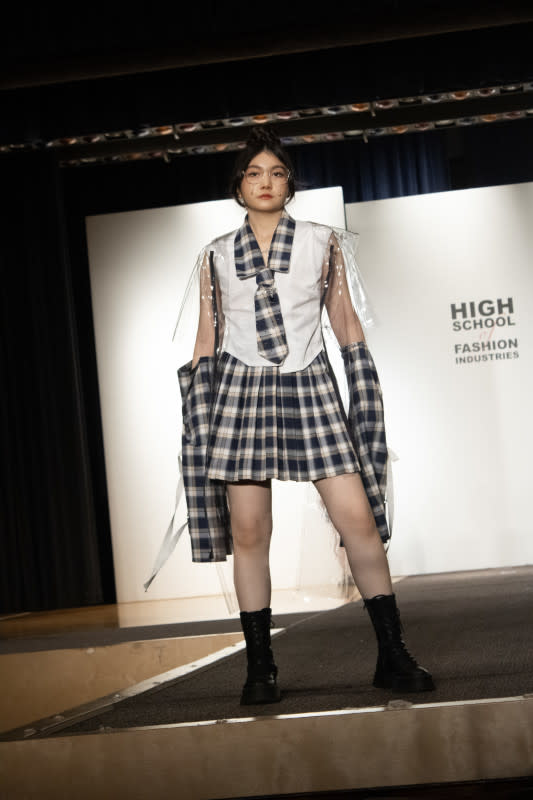
Photo: Courtesy of NYC Public Schools
Curriculum
It's easy (and understandable) to assume that attending a fashion high school is like living a "Project Runway Junior" fantasy. While there's plenty of sewing and sketching happening, students aren't expected to produce a garment a day.
The school takes a steadied and considered approach. The curriculum isn't the same for each of the majors, but all students take the same general education courses — math, science, history and English. There are similarities in the academic roadmap: Freshman year is predominantly tailored to standard classes, only offering one 45-minute specialized class specific to your CTE major.
Fashion Design is, unsurprisingly, the largest major at HSFI. Freshman year, students take an art class that teaches how to draw flats and 10-head croquis (by hand and digitally); if their schedule permits, they're also introduced to Adobe Photoshop and Illustrator, concept boards and sewing machine operation. Sophomore year puts this foundation into practice by focusing on construction of garments. Junior year is the most intensive, honing in on technical abilities like draping, fabric comprehension, various sewing techniques and advanced pattern-making. Senior year combines everything learned via a cumulative project, like an end-of-year runway show.
The main goal is for students to graduate with a well-rounded understanding of fashion as an industry, not just garment creation.
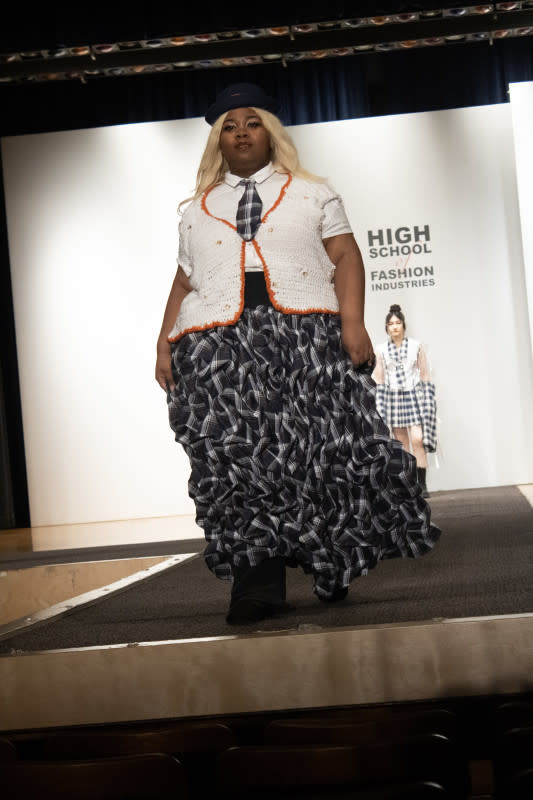
Photos: Courtesy of NYC Public Schools
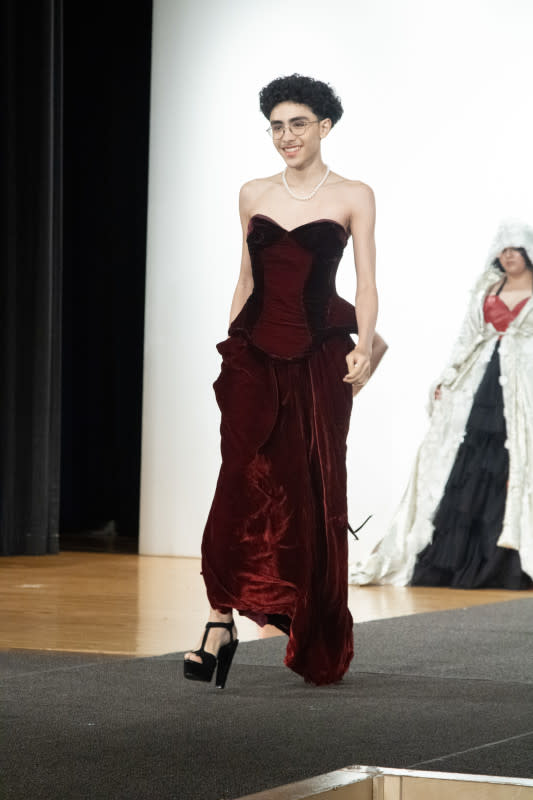
"A lot of times people think, 'Alright, I'm going to draw [my designs], sew it and it's here.' They don't realize that [fashion] is a business," says the school's Fashion Show Director Alexandra Rochford. "We equip students with everything on how to design a collection from start to finish. If you graduated from the school, you would know how to put a collection together, how to sew it, how to fit it, how to market it and how to sell it."
HSFI regularly consults different colleges, institutions and other professionals on what shifts are happening in the industry and what new technology is emerging. "The curriculum mirrors what's happening in the industry," Ricci explains. "We're always looking ahead because it's a complete disservice to teach them anything antiquated or that will be completely outdated by the time they reach the industry."
To that end, HSFI has invested in a state-of-the-art lab (for all majors), equipped with 3D printing, industrial machinery, a photo booth and professional-level digital software. It also has a Curvy Lab, a creative space that allows students to work with inclusive-sized dress forms. The school has its sights set on implementing labs for childrenswear and adaptive fashion, too.
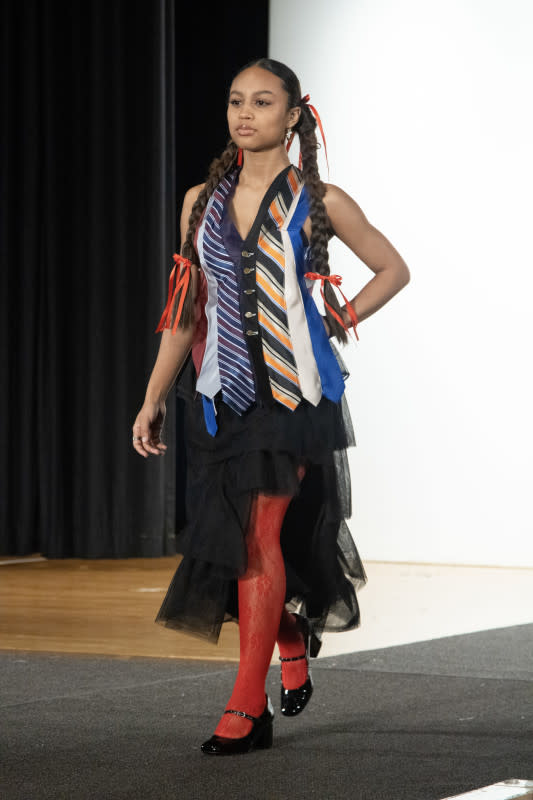
Photo: Courtesy of NYC Public Schools
Senior Runway Show
HSFI's end-of-year fashion show is entirely student-run, and design majors spend the entire academic year working on their (required) final garment.
"We start as soon as [the school year begins]," senior fashion design student Jadora Altidor, '24, says. "As soon as September hits, you're already thinking, 'What do I want my fashion show garment to look like?' It wasn't really that stressful because we were already starting off so early."
Even so, students dedicate all their free time to completing their projects, be it staying late after school or using free periods.
"Sometimes it's hard to balance," Altidor says of the senior-year class schedule. "Sometimes two periods isn't enough to complete your garment, so you might have to [skip] history [class] and do it, or use times like your lunch period or come in early in the morning."
Few parameters are put in place by instructors. Designers can go for any specialty — menswear, womenswear, intimates, bridal or childrenswear. There is a theme (the 2024 Senior Runway Show was "Dark Academia"), but designers are free to interpret it however they want.
Fashion Design alum Ely Daniel, '23, recalls the experience as not only "a great representation of your four years put together," but also a time of "professional development."
"Even though all the odds were stacked against us — we got rained on, shoes broke, jewels were missing — we were able to push through," she remembers. "The show must go on, so we did what we had to do and we worked that runway."
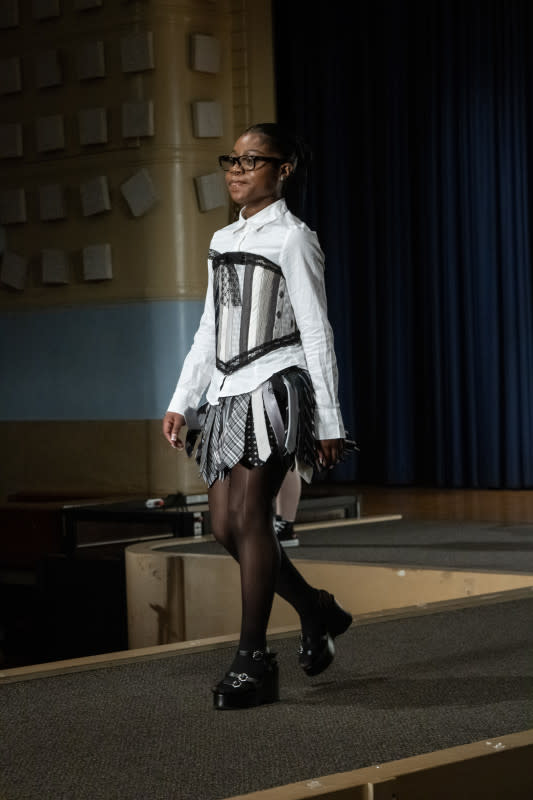
Photo: Courtesy of NYC Public Schools
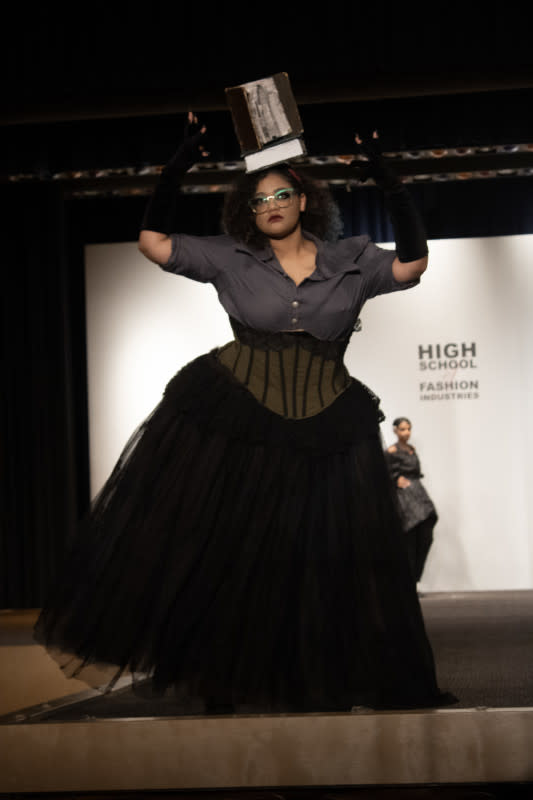
Other majors are highly involved in the production, too: Art & Design helps with the program and tickets; Marketing handles promotion, social media and selling merchandise; Photography captures content and conducts interviews. Some students join the makeup team, while others sign up to be models. As Rochford states: "If you want to be involved, I'll find a job for you."
Industry Opportunities
Academic rigor is only one part of student development — being located in a fashion capital, HSFI also offers real-world opportunities courtesy of its many industry connections. These include workplace showcases, office tours, design competitions, job shadowing, informational interviews and (the most popular resource of all) masterclasses from brands like Kleinfeld, Adidas, Saks Fifth Avenue, Macy's and Swarovski.
"Say someone wants to teach a fashion illustration masterclass — a photography student wouldn't originally have that opportunity during their normally scheduled day," Ricci explains. "But because we have these masterclasses — perhaps it's a field trip, a trade show or we're going to a design company — there's still the opportunity to experience it and to gain further knowledge, so they're able to make an informed decision on what they want to pursue in college."
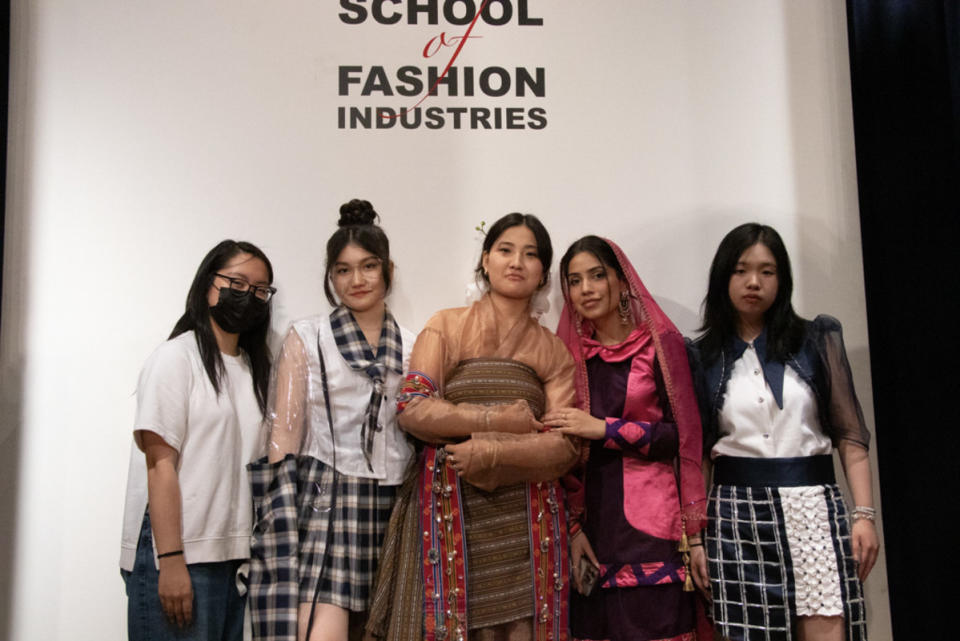
Photo: Courtesy of NYC Public Schools
Summer internship opportunities are another highlight for students, who may get to spend a month working at a major fashion label.
"It was so much fun," senior fashion design student Jelice Fiffee, '24, says of interning at Alexander Wang. "We had to apply and do an interview, and it's not even just fashion [design] majors who get the opportunity — it's all eleventh graders and seniors. The program really touches on everything: We have workshops, we met Alexander Wang himself, we got to see the showroom, we got to speak to models, stylists, other photographers, we were really in the fashion industry."
Daniel — who participated in the same internship, plus a plethora of masterclasses, clubs and volunteer work — emphasizes how these industry opportunities taught her to network: "It's a very important thing to do, especially when you want to start your career, and I love the way the school emphasizes that. Even with your teachers, you don't realize that you're making a connection and building a professional relationship."
Post-Grad Experience
There's a strong HSFI-to-fashion-college pipeline. FIT is the most popular choice for graduates. (It helps that the college is only a few blocks away.) Some graduates opt to go out of state, enrolling at schools like SCAD and FIDM. A handful will take less expected routes: Daniel is a rising sophomore at John Cabot University in Rome, Italy majoring in International Business; Almanzer is studying Fashion Studies at Columbia College Chicago.
Speaking on why she took the business route, Daniel said, "The end goal in my life is to have my own brand and fashion house. [At HSFI] they prepare you so well with the basics, but I feel like it's very necessary for me to have at least some type of business curriculum."
Almanzar agrees, stating she also wanted to cultivate a business-oriented mindset, but overall, HSFI provided a "steady foundation."
"When we came down to Illustrator, Photoshop, pattern making and anything fashion design, I already knew what I was doing," Almanzar says. "When it came to the business side of fashion, that's when it was kind of tricky, but I still got it down. I was really prepared for what was happening."
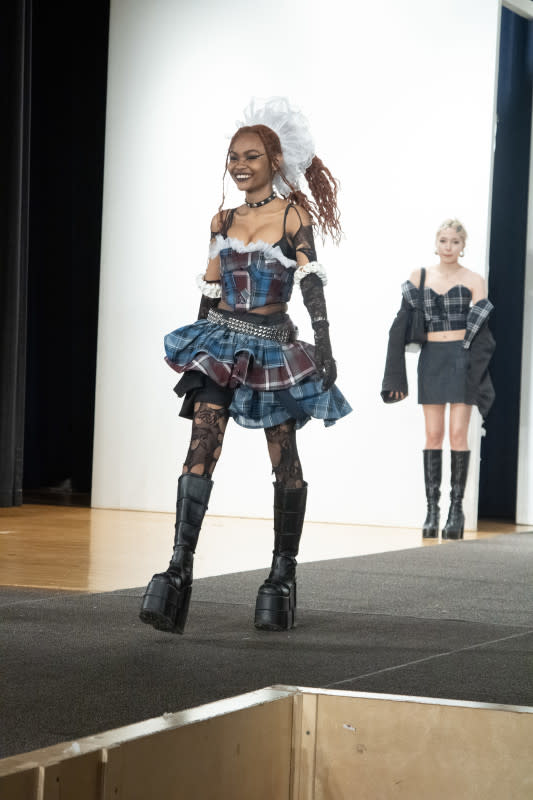
Photo: Courtesy of NYC Public Schools
Daniel adds that HSFI prepared her for the "social setting" of college, like not being afraid to mingle and build community.
"I didn't really have a lot of business experience, but it was more of the social skills that I developed [at HSFI] that helped me," she says. "It didn't necessarily have to do with the classes. It was building relationships with the teachers and having friends there. It made it easier for me to transition into college."
With a keen understanding of both the industry's progress and its opportunities for growth, educators see HSFI as a vehicle for fostering more diverse voices and inclusive ideas in fashion.
"These students are not only walking out with the skills — they're going to completely change the industry," Ricci says. "They're not going to take no for an answer. That's what I'm most excited about, because I see the rumblings. I've seen how the rumblings have led to ripples, and I see the way it's coming. And it's not done. It gives me chills."
Never miss the latest fashion industry news. Sign up for the Fashionista daily newsletter.


